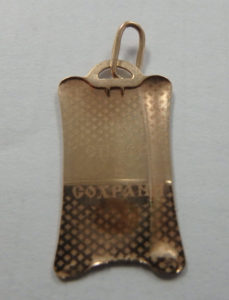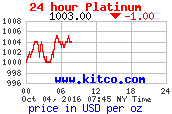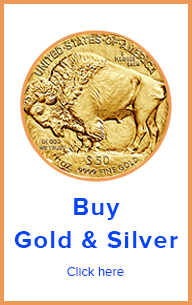Red, Pink and Rose Gold

Red Gold Jewelry
Rose Gold Jewelry
Pink Gold Jewelry
-
What is Red and Rose Gold
-
Red and Rose Gold Metallurgy
-
Red and Rose Gold Fineness
-
Red and Rose Gold Testing
This article explains what are the reddish tone gold alloys from the point of view of the gold buyer. As a gold buyer, I focus on what I will be able to extract from the gold alloy items I buy. For those interested beyond this, there are plenty of much more detailed articles. In this article, I will use the terms listed above plus “reddish” to address the type of alloy this article is about.
What are Red, Pink and Rose Gold Alloys?
The terms “red gold”, “pink gold” and “rose gold” are a form of a misnomer. In addition, often these gold alloys are also referred to as “Russian” gold, which is another misnomer, as this type of gold alloys are common in most of Eastern Europe.
Red, pink and rose gold are any gold-based alloys in which an additive has been added, or mix proportion has been optimized, in order to achieve a reddish or rose hue in the resulting metal. Thus, it is not that the resulting gold alloy looks literally red or rose colored. It is more like there is a tone in the hue which deviates from the typical yellow and leans towards the reddish. As a result, the hues of red and rose gold alloys range significantly. Some barely show a reddish tone. Others show a rose-tone for sure. On the opposite end of the gamut, as in the case of the Krugerrand, a much more pronounced red tone is evident at first sight on the metal’s hue. Other than color tone, all the other characteristics of the comparable typical yellow tone gold alloy are for the most part retained.
Red, Pink and Rose Gold Metallurgy
In jewelry, reddish tone gold alloys are achieved by casting pure gold together with a red gold alloy. Reddish gold alloys vary significantly in composition and are designed for achieving specific hues. Another option for the goldsmith is to cast a mix using more copper and less silver.
For the most part, gold does not want to alloy with anything unless silver is also part of the mix. The less silver, the more precision is needed to get good results out of the resulting alloy.
The most reddish of the red-toned gold alloys are achieved by using no silver at all. In this case, special measures, such as rapid cooling, are needed in order to end up with a workable end product.
Another option for making reddish to gold jewelry is to buy already formulated gold casting grain, therefore not having to create the mix. This way, it is easier to achieve an already planned end result. Yet another option, is casting is not needed, is to buy already made red gold stock. This latter is red gold alloy already in the form of bars ready to be tooled.
For sure, depending on the copper proportions, and the other metals used, reddish tone gold alloys, other than color, have most of the same finished product characteristics as yellow gold. However, from the metallurgical and jewelry making point of view, depending on the mix, red gold behaves differently than yellow gold.
To begin with, casting red gold differs very minor, but significant ways, to casting yellow gold. Although the process of casting is basically the same, the more copper in the gold alloy casting, the more demanding, and subject to unacceptable flaws for slight reasons that would not be issues with yellow gold. An expert goldsmith will not have any problem with this white gold issues, though.
One of the benefits of the more reddish gold alloys is their durability. That may be one of the reasons class rings are often made of this material. Another good example is Imperial Gold. Imperial gold is the 22K gold alloy used in the Krugerrand and Sovereign gold coins. These gold coins are meant for circulation and the hardness of the 22K alloy demonstrates it.
Red, Pink and Rose Gold Fineness
Reddish tone gold alloys range from 22K (916 parts per 1000, 91.6%) fine to below. As mentioned above, on the top end of fineness in this rang is Imperial Gold (22K). In the middle range are the more pink, rose and even paler reddish tones, such as found in Russian (Eastern European) jewelry. The 10K fineness space of red gold is dominated by class rings, such as those made by Josten, which are basically indestructible.
Testing Red, Pink, and Rose Gold
From the point of view of a gold buyer, the most relevant gold test is the electronic test. The reason for this is that the electronic test passes an electrical pulse through the core of the subject item. However, there are always caveats. I have tested red gold items, in the red gold setting of the tester, that actually tested higher than the stamped fineness. This may have to do with the additives used to create the gold alloy. For the most part, though, the electronic testing is just right. It is basically an issue to be aware of.
The chemical rub test gives the same results for comparable to white and yellow gold. It is just that the chemical test does not provide figures, and results need to be interpreted within a 4K fineness latitude.
In summary, white gold is a gold based alloy in which an additive has been applied such that the gold tone of the metal has been bleached out. Although the end result, other than the color tone, has basically the same feel as yellow gold, there subtle but important metallurgical differences.
Resources


![[Most Recent Quotes from www.kitco.com]](http://www.kitconet.com/charts/metals/gold/t24_au_en_usoz_2.gif)
![[Most Recent Quotes from www.kitco.com]](http://www.kitconet.com/charts/metals/silver/t24_ag_en_usoz_2.gif)
![[Most Recent Quotes from www.kitco.com]](http://www.kitconet.com/charts/metals/platinum/t24_pt_en_usoz_2.gif)










